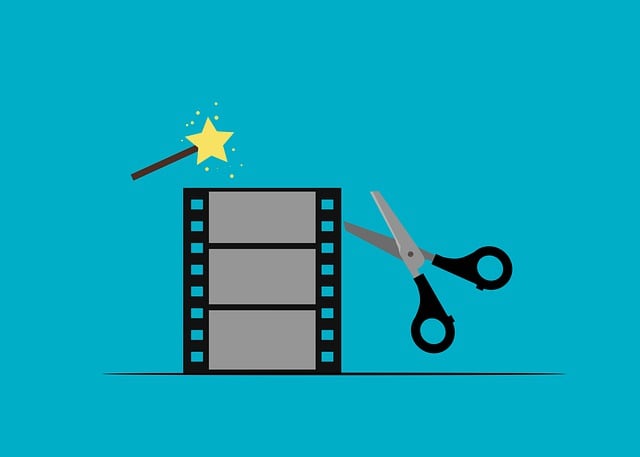DivX, a high-quality video compression format, is ideal for streaming online due to its efficient file size optimization. To open DivX files, users need compatible media players or encoders like VLC and HandBrake. This format's versatility ensures easy handling, making it a popular standard for video professionals. Efficient encoding involves using DivX Player/Encoder, adjusting settings, and installing codecs. Best practices include selecting appropriate codec settings, enabling hardware acceleration, and meeting system requirements for seamless playback.
Discover the power of DivX, a revolutionary codec that optimizes video encoding and decoding. This article guides you through mastering DivX, from understanding its fundamentals to leveraging its advantages for seamless video playback. Learn how to set up your system, follow efficient encoding steps, troubleshoot decoding issues, and implement best practices. By the end, you’ll be adept at handling DivX files, including how to open them with ease.
Understanding DivX: A Brief Overview

DivX is a video compression format known for its high-quality encoding and efficient decoding capabilities. It was developed to enhance video sharing and streaming, especially during the early 2000s when bandwidth was limited. The format offers an excellent balance between file size and visual fidelity, making it ideal for online distribution.
To Open DivX Files, you’ll need compatible media players or encoders that support this codec. Many modern video players can handle DivX files without any additional plugins, ensuring a smooth playback experience. This versatility has contributed to its longevity, even as newer formats emerge.
Advantages of DivX for Video Encoding and Decoding

DivX offers significant advantages for both video encoding and decoding, making it a popular choice among users looking for efficient multimedia processing. One of its key strengths is its ability to compress videos with minimal quality loss while maintaining small file sizes. This feature is particularly beneficial for online streaming, as it ensures fast loading times without sacrificing viewer experience.
Additionally, DivX supports a wide range of video formats and codecs, allowing users to easily encode and decode various types of media files. Learning how to open DivX files is straightforward; compatible players and editing software are readily available. This versatility has contributed to DivX’s longevity as a standard in video compression technology, making it an excellent tool for anyone working with digital media.
Setting Up Your System to Handle DivX Files

To start encoding and decoding DivX files efficiently, the first step is how to open DivX files and set up your system accordingly. You’ll need a reliable media player that supports DivX codecs and an encoder software capable of handling this format. Many modern video players, like VLC Media Player, can play DivX videos out of the box, making them an excellent starting point. If you’re planning on encoding videos yourself, consider downloading and installing an encoder such as HandBrake or FFmpeg. These tools offer a range of settings to optimize video quality and file size, ensuring smooth playback and efficient storage.
Once your system is equipped, it’s important to configure your media player to default to DivX decoding. This simple step ensures that any DivX file you encounter will be handled seamlessly, providing a smooth viewing experience without the need for additional plugins or downloads. With these foundational steps complete, you’re ready to explore the capabilities of DivX encoding and decoding in detail.
Efficient Video Encoding with DivX: Step-by-Step Guide

Efficient video encoding is made simple with DivX, a powerful and widely supported codec. Here’s a step-by-step guide to help you optimize your video files:
1. How to Open DivX Files: Begin by downloading and installing DivX Player or DivX Encoder, depending on your needs. DivX Player allows you to watch encoded DivX videos, while the encoder enables you to create them. Once installed, locate and open your video file. Ensure it’s compatible with DivX; most modern video formats are supported out of the box.
2. Encoding Options: After selecting your video, you’ll be presented with various encoding settings. Choose an output format (e.g., MP4, AVI), resolution, and bit rate. Adjusting these parameters allows for a balance between file size and quality. Higher resolutions and bit rates yield better quality but result in larger files. Optimize based on your intended use; for instance, lower settings might be suitable for streaming, while higher settings are ideal for archival purposes.
Decoding DivX Videos: Troubleshooting Common Issues

Many users face challenges when trying to open and play DivX videos, often due to compatibility issues or outdated decoders. DivX is a video compression format known for its high-quality encoding while maintaining efficient file sizes. However, troubleshooting common problems can help ensure a seamless viewing experience.
If you’re unable to open a DivX file, the first step is to check if your media player supports the format. Many modern players support DivX decoding, but older versions might not. Updating your media player to the latest version can resolve this issue. Additionally, installing or updating DivX codecs can also fix playback problems. For how to open DivX files, ensure you have the appropriate decoder installed, which will allow your player to decode and display the video correctly.
Best Practices for Optimizing DivX Encoding and Decoding

When encoding videos using DivX, following best practices can significantly enhance efficiency and outcome quality. Firstly, choose the appropriate codec settings based on your video content and intended use. Balancing factors like bit rate, resolution, and compression methods ensures optimal file size without sacrificing visual fidelity. Techniques like constant bit rate (CBR) or variable bit rate (VBR) encoding allow fine-tuning to meet specific requirements.
Additionally, leveraging hardware acceleration can dramatically speed up the encoding process. Modern processors often include dedicated video encoding hardware that offloads this task from the CPU, reducing processing time and improving overall efficiency. For smooth decoding, ensure your system meets the minimum requirements for DivX playback, including adequate RAM and a compatible decoder installed. Knowing how to open DivX files effectively also streamlines your workflow, as these videos are widely supported by various media players and editing software.
DivX, with its robust encoding and decoding capabilities, offers an efficient solution for managing video content. By understanding its advantages and implementing best practices, users can seamlessly open and enjoy DivX files without hassle. Following the step-by-step guide and troubleshooting tips ensures a smooth experience, making DivX a reliable choice for both encoding and decoding videos effectively.
